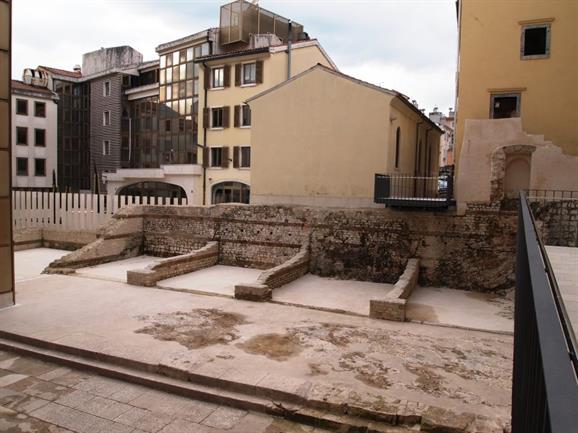Principia at Tarsatica
Removed from Unnamed collection





+ 3
Source: FiveLands Travel Images may be subject to copyright. Learn More
The Old Gate, often referred to as the Roman Arch, is not a Roman triumphal arch as once thought. Instead, it served as a grand entrance into the bustling military headquarters of the ancient Roman empire's Tarsatica. This historic town laid the foundation for what would become medieval Rijeka. Locals have always had a knack for naming things simply, hence the straightforward moniker "The Gate." Over time, especially during the Classicism era, the term "Roman Arch" caught on as scholars began documenting and studying this intriguing monument.
While the arch's ornate facade now remains only in fragments, much of it has either crumbled away or was repurposed into the structures of medieval Rijeka. The Tarsatica Principia was a hive of activity, acting as the main camp and supply base. It was also the launch point for the Claustra Alpium Iuliarum: an impressive network of defense walls, towers, and fortifications stretching for miles. These structures were strategically placed along key routes and high vantage points to fend off barbarian invasions, protecting Italy and the core of the Roman Empire.
For those interested in history and architecture, Rijeka offers a fascinating glimpse into the past. Wandering through its streets, you can almost hear the echoes of Roman soldiers and feel the weight of centuries on these ancient stones. The city beautifully blends its rich history with modern vibrancy, making it a must-visit for any traveler.
 FiveLands Travel
FiveLands Travel  Croatia
Croatia